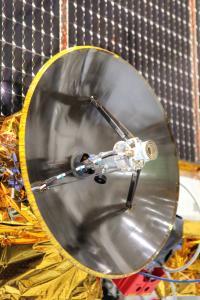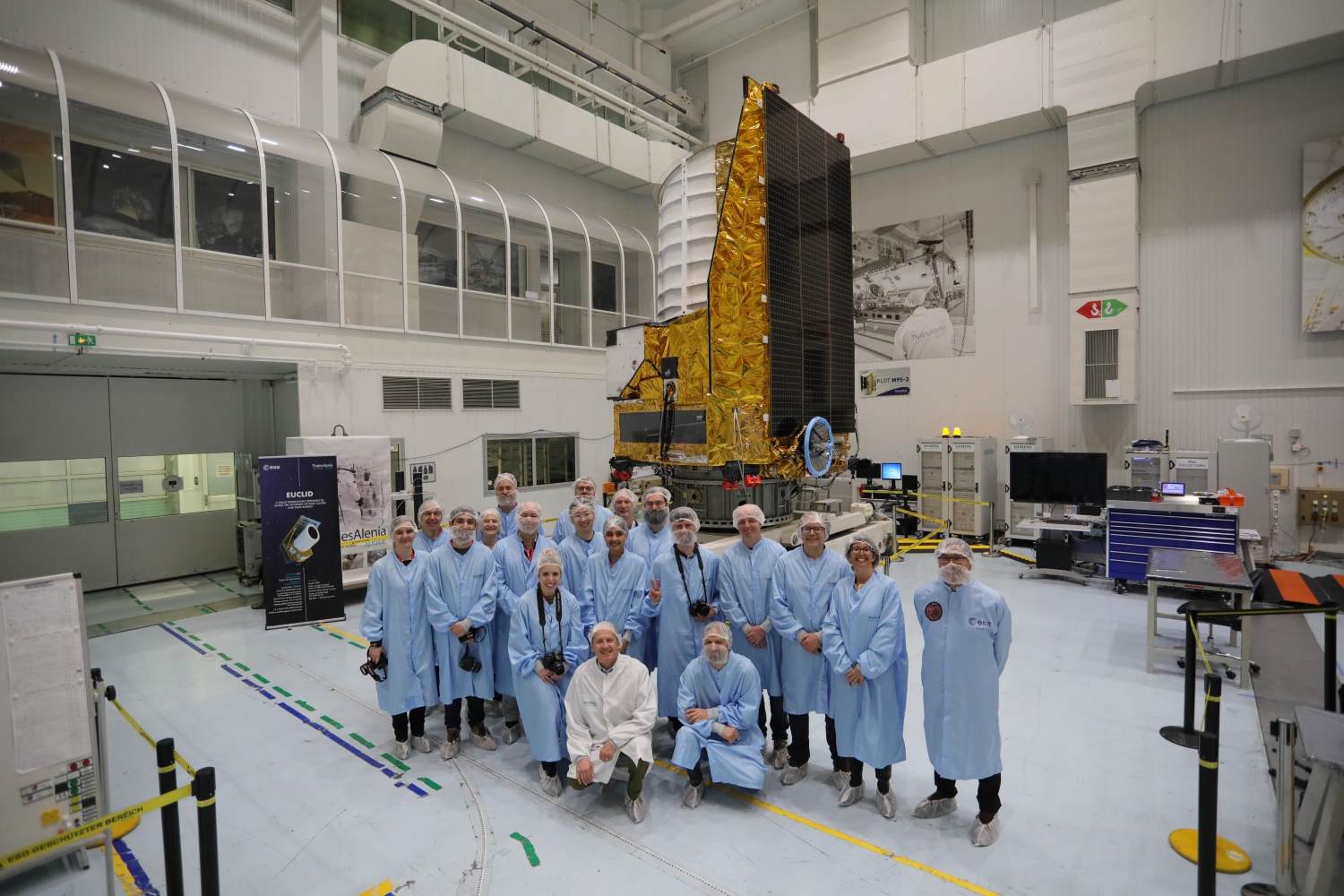Centro de Excelencia Severo Ochoa
Menu
Search

At Thales Alenia Space's satellite assembly and testing facility in Cannes, France, on February 22, 2022, 80 members of the Euclid space mission, a consortium to which the IFT belongs, visited the satellite during its latest campaign during its latest launch. Test prior to shipment to Cape Canaveral. One of the best kept secrets in the Universe, dark matter and dark energy, will be studied by the iconic Euclid satellite.
Euclid will map the large-scale structure of the universe at a distance of more than 10 billion light-years over the next six years to show how the universe has expanded and evolved. Among the most fundamental questions in modern cosmology addressed by the mission are how the universe formed and why it is expanding at an accelerating rate rather than being held back by gravitational forces.
There are two optical instruments on Euclid: the Visible Instrument (VIS) and the Near-Infrared Spectrometer and Photometer (NISP), both of which have sensors. Both instruments will record data simultaneously from the telescope's target area.
Through a mosaic of 36 CCD sensors, each consisting of a 4000 x 4000 pixel array, the VIS instrument will measure the shapes of distant galaxies with accuracy. The detector has a total resolution of about 600 megapixels.
The NISP instrument will derive the redshift of galaxies by splitting their light into individual wavelengths. By doing so, cosmologists will be able to estimate how far away these galaxies are from one another. Euclid data will constitute the largest and most precise 3D study of the Universe ever conducted.
Euclid will orbit the L2 Lagrange point in the Sun-Earth system, 1.5 million kilometers from Earth in opposition to the Sun, with a height of 4.7 meters and a weight of about 2 tons at launch. The system will provide 150,000 high-definition images and color and spectral information per year, which is almost a petabyte.
A SpaceX Falcon 9 rocket is scheduled to launch Euclid from Cape Canaveral, Florida, in July 2023.

About Euclid
Euclid is an ESA medium class astronomy and astrophysics space mission. By making use of both weak gravitational lensing, which measures the distortion of distant galaxies caused by intervening matter, and baryonic acoustic oscillations, based on measurements of the clustering of galaxies, the mission will capture a 3D picture of the evolving distribution of both dark and ordinary (or baryonic) matter in the cosmos. This will enable scientists to reconstruct the past few billion years of the Universe's expansion history, estimating the acceleration caused by the mysterious dark energy.
ESA selected Thales Alenia Space as prime contractor for the construction of the satellite and its Service Module, with Airbus Defence and Space chosen to develop the Payload Module, including the telescope. Euclid comprises two instruments: the visible instrument (VIS), and the near-infrared spectrometer and photometer (NISP). The Euclid Consortium is a collaboration of nationally funded scientists, engineers and managers responsible for the definition of the scientific mission and the provision of the scientific instruments and data processing. The VIS instrument is being built by a consortium of nationally funded institutes led by UCL Mullard Space Science Laboratory (MSSL), UK. The NISP instrument is being built by a consortium of nationally funded institutes led by the Laboratoire d'Astrophysique de Marseille (LAM) in France.
A consortium of scientists, engineers, and managers, Euclid is funded by national research agencies. Its responsibilities include defining the mission's scientific objectives, providing scientific instruments, and processing data. Since 2011, the IFT Gravitation and Cosmology group has been a member of the Euclid Consortium.
Social media